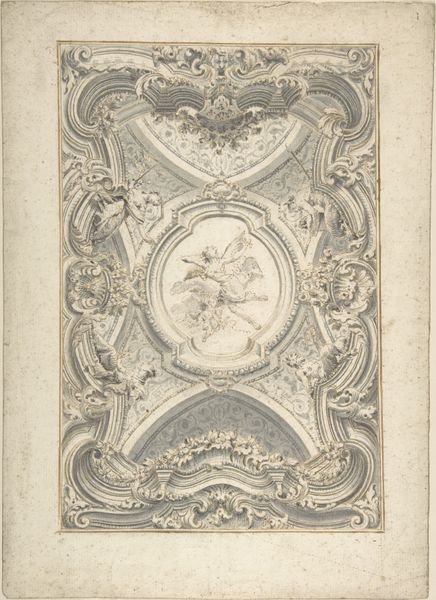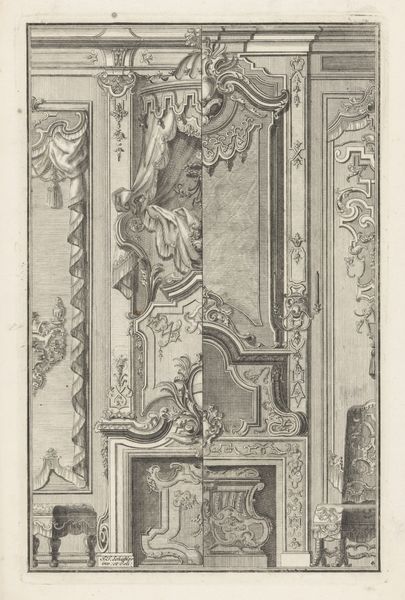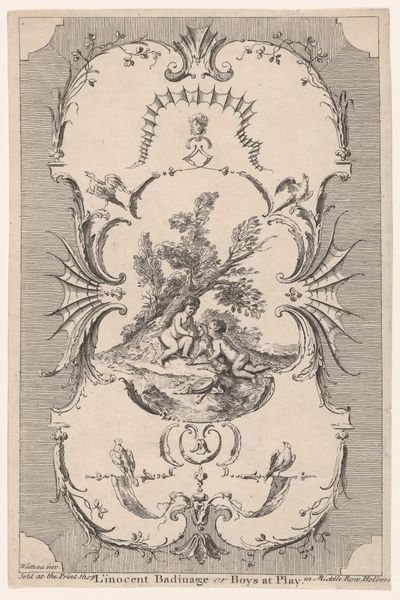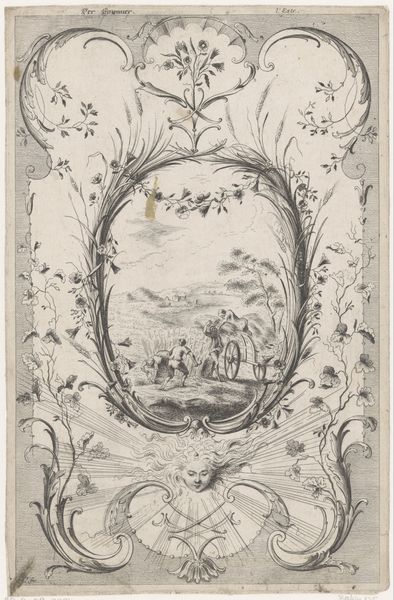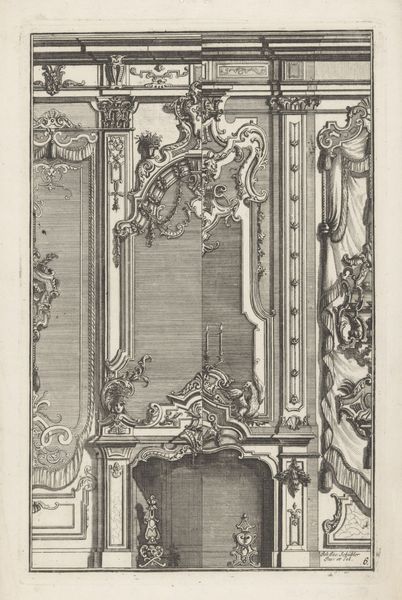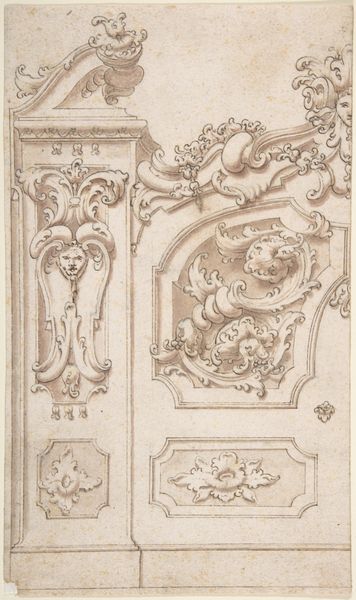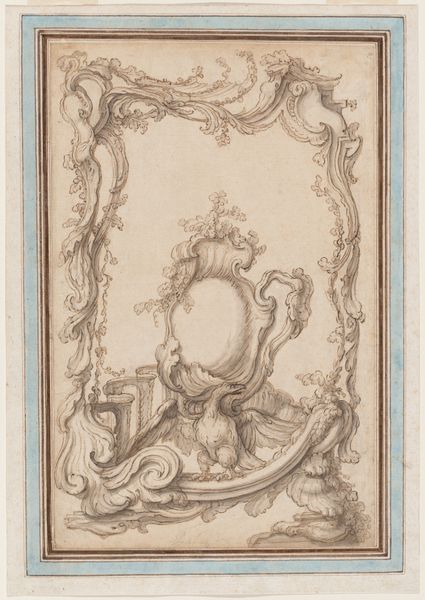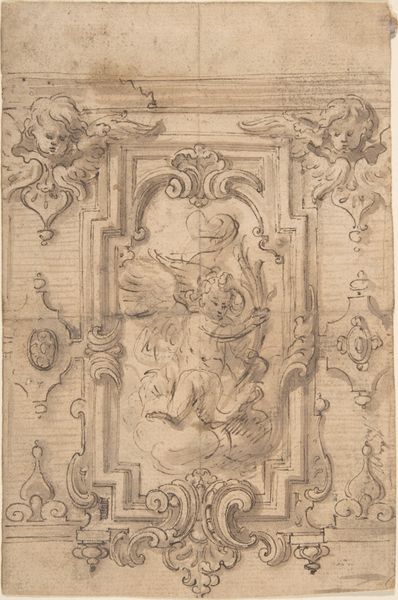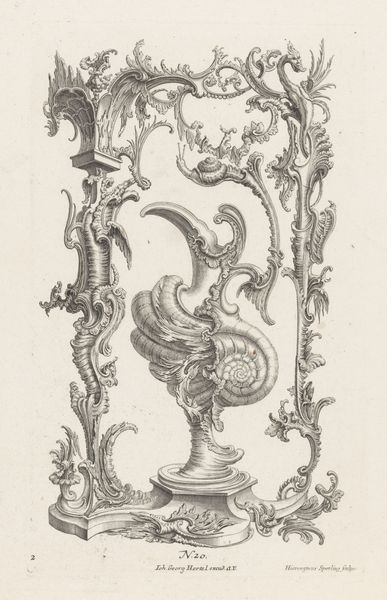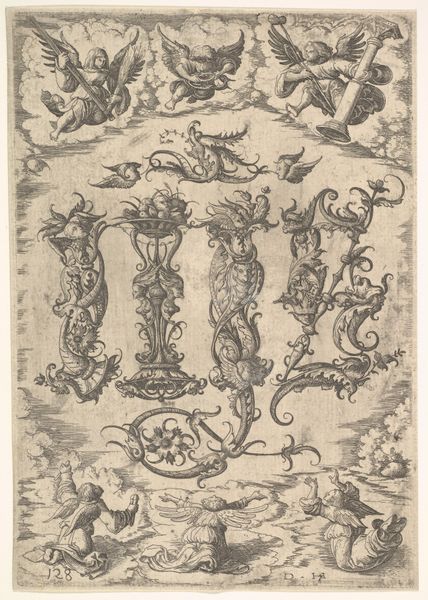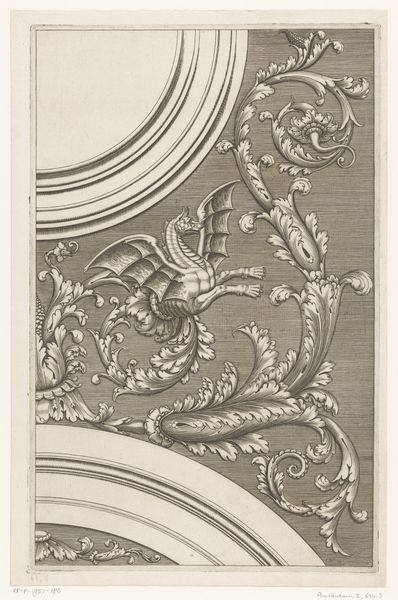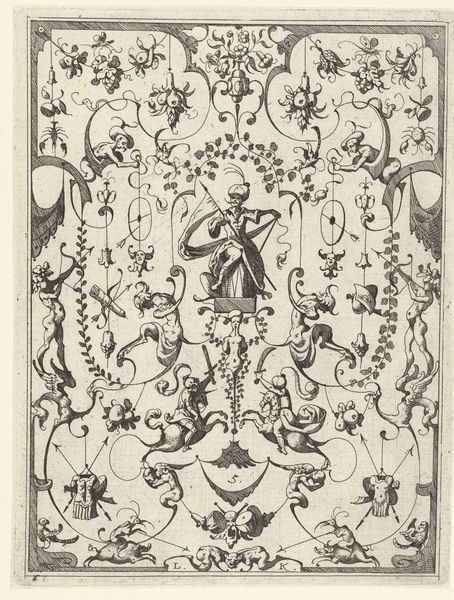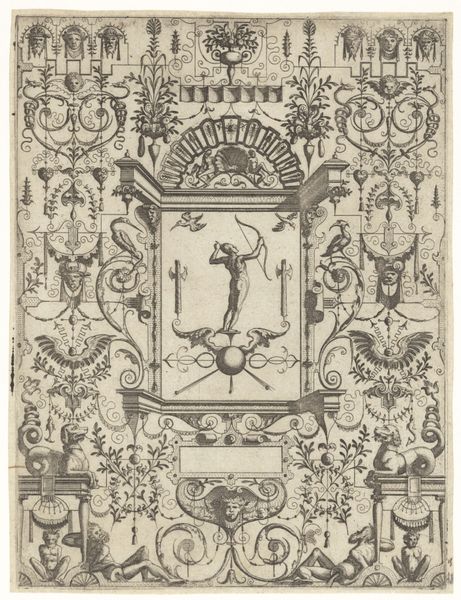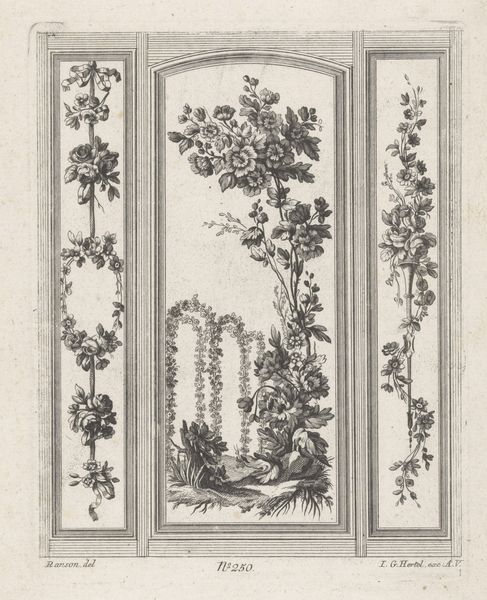
drawing, etching, architecture
#
drawing
#
etching
#
landscape
#
etching
#
architecture
#
rococo
Dimensions: sheet: 54.4 x 32 cm (21 7/16 x 12 5/8 in.) mount: 57.8 x 35.4 cm (22 3/4 x 13 15/16 in.)
Copyright: National Gallery of Art: CC0 1.0
Editor: This drawing and etching by Jean-François de Cuvilliés I, titled "A Rococo Garden Trellis and Gazebo," dates back to around 1750. The grey wash gives it a ghostly, almost dreamlike quality, even though the architectural details are precise. What strikes you about this garden scene? Curator: What’s interesting here is not simply the visual representation but the political and social context it reflects. Rococo wasn’t just about ornamentation; it was a visual language that projected power and cultivated an aristocratic identity. Cuvilliés, as the Bavarian court architect, played a key role in shaping that language. How does this etching speak to ideas of status and display in the mid-18th century, do you think? Editor: I see that… the trellis and gazebo aren’t just garden features. They seem like elaborate stages designed to impress. The abundance of decoration seems less about enjoying nature and more about showcasing wealth. Were gardens like these really used for leisure, or were they more for spectacle? Curator: That's a great question. It's probably a mix. These gardens were settings for performances, festivals, and diplomatic events. The aristocracy used these staged spaces to demonstrate control over nature, and by extension, their social dominion. What does it tell us that this design was preserved as an etching, and likely disseminated through print? Editor: So, the artwork isn’t just a drawing of a garden. It’s a representation of social power reproduced and spread, almost like propaganda for the aristocracy? Curator: Exactly. The reproduction and distribution of designs like these through prints further solidified Rococo as a dominant style associated with the ruling class, influencing taste and architecture beyond the court itself. Think about who might have purchased these etchings and how they would have used them. Editor: That definitely shifts my perception. I initially saw a pretty garden scene, but now I recognize it as a carefully constructed image designed to convey authority. It really illustrates how art and architecture played a significant role in reinforcing social hierarchies. Curator: Indeed. And thinking about how this image circulated lets us see it as a key player in shaping cultural values beyond the physical garden walls.
Comments
No comments
Be the first to comment and join the conversation on the ultimate creative platform.
